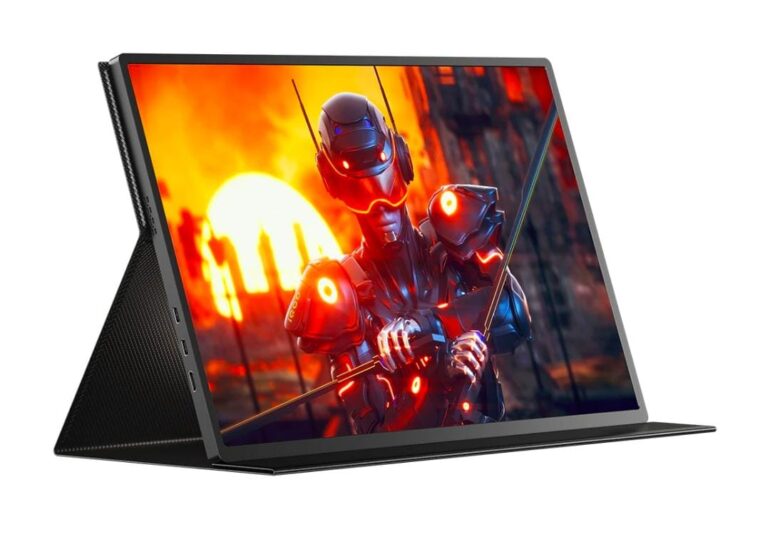You stare at screens all day. Your eyes feel tired. They get dry. You might get headaches. Many monitors claim to be “easy on the eyes.” But how can you know if it’s true?
This guide will show you what to look for. We will give you clear steps to find a monitor that won’t strain your eyes.
Look for These Key Features
Flicker-Free Technology
This is the most important feature. Many screens flicker quickly to control brightness. You can’t see it, but your eyes can. This causes headaches and strain.
- How to check: Look for “Flicker-Free” certification from TÜV Rheinland or similar groups. This means the screen was tested.
Low Blue Light Protection
Blue light from screens can disrupt sleep and cause eye fatigue. Good monitors reduce blue light.
- How to check: See if it has a hardware-based low blue light solution. Software filters work but can make colors look yellow. A true eye-friendly monitor reduces blue light without ruining the picture.
A High Refresh Rate
Refresh rate is how many times the screen updates per second. A higher rate, like 120Hz or 144Hz, makes motion look smoother.
- Why it matters: Smoother motion is easier on your eyes. It reduces the effort they have to make to track movement. This is key for gamers. A good 144hz gaming monitor will often include other eye-comfort features too.
Good Brightness and Contrast
A screen that’s too dim or too bright is hard to look at. You want a monitor that gets bright enough for a sunny room but can also dim nicely for dark rooms.
- How to check: Look for a brightness rating of at least 300 nits. Some monitors have sensors that auto-adjust brightness to your room.
Matte Finish, Not Glossy
A glossy screen acts like a mirror. It reflects lights and windows, creating glare. This forces your eyes to work harder.
- How to check: A matte (anti-glare) finish looks duller when the screen is off. It scatters light instead of reflecting it directly into your eyes.
A Quick Checklist Table
| Feature | What It Does | How to Verify |
| Flicker-Free | Eliminates invisible flickering | Look for TÜV Rheinland certification |
| Low Blue Light | Reduces harmful blue light | Prefer “hardware-based” over just a software filter |
| High Refresh Rate | Makes motion smooth | Look for 120Hz or higher |
| Anti-Glare Coating | Reduces reflections | The screen should not look like a mirror |
| Adjustable Stand | Lets you position screen correctly | Look for height, tilt, and swivel options |
Don’t Just Trust the Box
Marketing words can be misleading. “Eye-care” or “low blue light” might just be a simple software mode.
One thing to consider: look for independent certifications. Groups like TÜV Rheinland test monitors rigorously. Their seal of approval is a trustworthy sign. If a monitor has it, you know it passed real tests.
Test It Yourself (If You Can)
If you can see the monitor in a store, try this simple test. Use your smartphone’s camera. Point it at the monitor. If you see dark bars rolling across your phone’s screen, the monitor flickers. A truly flicker-free screen will show no bars.
Also, look at the screen from an angle. Colors should not shift or look washed out. This means it has a good viewing angle, which is more comfortable.
Think About How You’ll Use It
Your needs matter. A graphic designer needs perfect color accuracy. A gamer needs a high refresh rate. An office worker needs comfort for long hours.
Many modern touchscreen monitors combine these features well. They often have good anti-glare coatings and robust stands for adjusting the angle, which helps reduce neck and eye strain.
Your Habits Still Matter
The best monitor in the world won’t help if you use it poorly. Remember these habits:
- Sit an arm’s length away.
- Make sure the top of the screen is at or just below eye level.
- Follow the 20-20-20 rule: every 20 minutes, look at something 20 feet away for 20 seconds.
- Don’t use a bright screen in a dark room.
A good monitor makes these habits easier to follow.
Frequently Asked Questions
Q: Are expensive monitors always better for your eyes?
Not always, but they often have better technology. The key is to look for the specific features we mentioned, not just the price.
Q: Is a larger screen always better?
A larger screen with high resolution can be easier to read because text is sharper. But a small screen with the right features is better than a large, flickery one.
Q: Can I make my old monitor eye-friendly?
You can improve it. Enable the blue light filter in your settings. Make sure the brightness is right for your room. But you can’t add flicker-free technology if it wasn’t built in.
Q: Do I need special glasses if I have an eye-friendly monitor?
Probably not. A good monitor that reduces blue light and flicker does the same job as many blue-light-blocking glasses.
Q: How important is the monitor stand?
Very important. If you can’t position the screen correctly, you’ll strain your neck and eyes. Look for a stand that adjusts for height and tilt.
Q: What is the most important feature for eye strain?
For most people, it’s flicker-free technology. Invisible flicker is a major cause of headaches and fatigue.
The Bottom Line
Finding an eye-friendly monitor is about looking past the marketing. Don’t just look for the words “eye care.” Look for the proof.
Check for flicker-free certifications. Look for a high refresh rate and a matte screen. Think about how you will use it and adjust it.
Your eyes are important. Spending a little time to find the right monitor is worth it. You will feel better at the end of the day.






